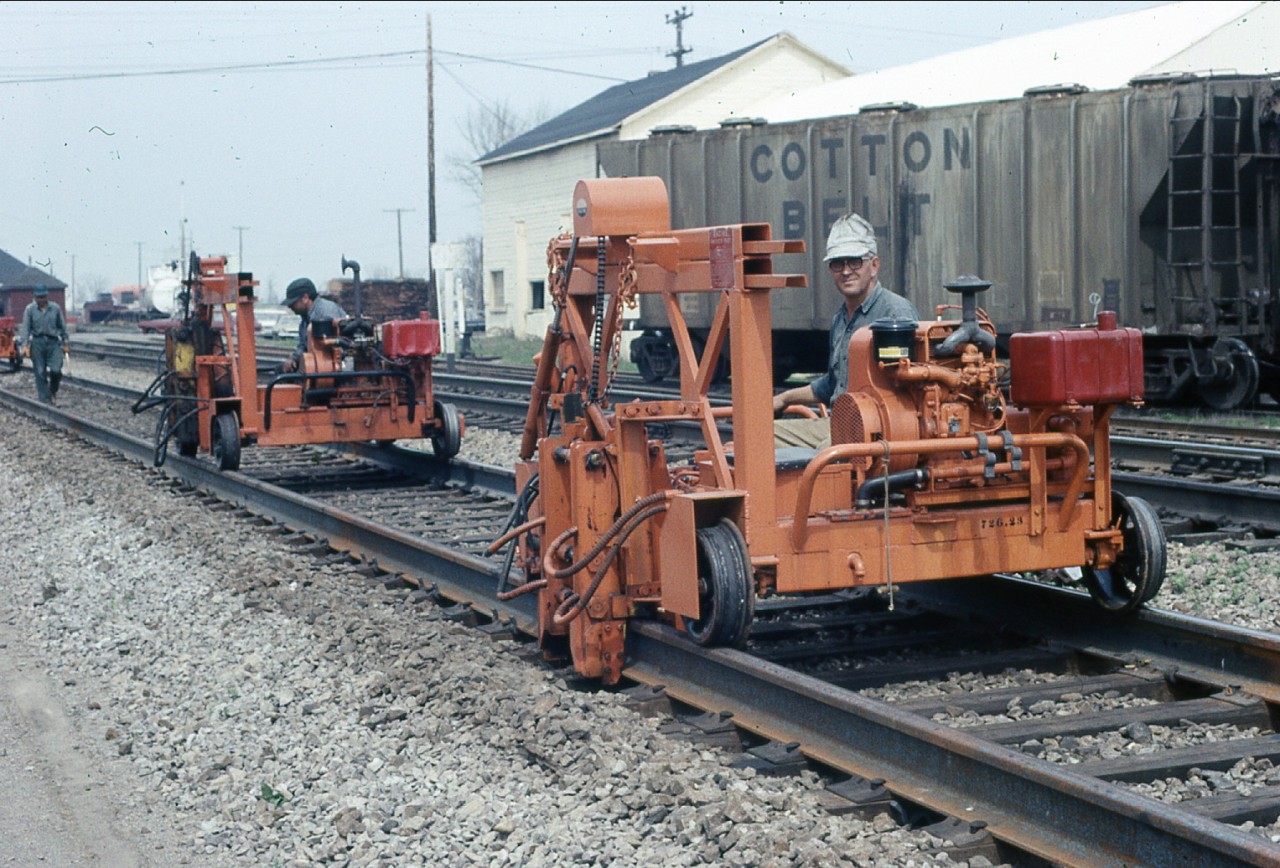
Welcome Visitor. First time here? Like what you see? Bookmark us for when you are bored, and check out 'top shots' and 'fantastic (editors choice)' in the menu above, you won't be dissapointed. Join our community!
click here to sign up for an account today. Sick of this message? Get rid of it by
logging-in here.



What a fabulous photo! Thanks for posting!
The fellow operating the machine is Mike. He was a Portuguese extra gang labourer/Group III machine operator working for CN in the 1960′s and 70′s. My brother and I worked with this gentleman in 1969 and 1970 on CN’s regional rail gang #41.
The machine, CN 726-23 is a Racine Railroad Products model ‘Anchor Fast’. This type of unit is now numbered in the CN 685-xx series in the System Work Equipment inventory.
The unit is working towards the camera. Indexing to every other tie, the operator positions the ‘workhead’ over the rail/tie where two new rail anchors have been previously hung by an extra gang labourer. The workhead is dropped over the rail/tie above the two new anchors, the application tools ‘grasp’ the rail anchors, ‘box’ (squeeze) them against the side of the tie, then rotate to ‘snap’ them into place tight to the rail base/tie sides.
You can see new rail anchors hanging from the rail base on the second and fourth ties ahead of the machine, and the newly applied rail anchors at every other tie behind the machine.
When one machine would ‘catch up’ to the unit in front, they would ‘leapfrog’ ahead a few rail lengths apart and continue the application process.
There were usually three, sometimes four of these machines working in tandem applying new rail anchors on a full size production rail gang.
Today, rail anchors continue to be applied by machine, however the process is fully automatic and controlled by the push of a button. New anchors are carried on-board the machines in ‘bulk’ (enough for a days rail laying production), and ‘fed’ into chutes by the machine operator. No more labourers bending over at every other tie to hang the anchors.
Sure would like to see more of these ‘at work’ photos if you’re willing to share them.
Note the rope hanging from the bar on the leading end of the machine.
These machines had a 2-cylinder Wisconsin gasoline engine and were ‘pull started’ using the rope that was wrapped around an external crankshaft pulley.
Also, no headlights, no work lights, no reflective striping, no cab, no ear plugs, no safety glasses, no hi-vis vests, exhaust pipe/muffler at head level! Oh, the good old days.
The operators name was Miguel (Mike).
How about the sleeves rolled up? It was quite a shock to go from this environment to a job in a refinery where even riding around in the truck required sleeves rolled down. The no ear protection is what caught my eye first off. Be a long day of noise.
It was quite a shock to go from this environment to a job in a refinery where even riding around in the truck required sleeves rolled down. The no ear protection is what caught my eye first off. Be a long day of noise.
Hi Extra 5610 West. Thanks for commenting.
Thanks for commenting.
Yes, the constant drone of those old Wisconsin engines must have been awful for those sitting in the operators seat all day. Especially with the exhaust pipe/muffler right at ear level!!!
Other noticeable ‘safety’ differences from today’s railroading are;
no hard hats
no bumpers on the machines
no chain guard on second machines workhead chain sprocket
unprotected fuel reservoir
and the list goes on …